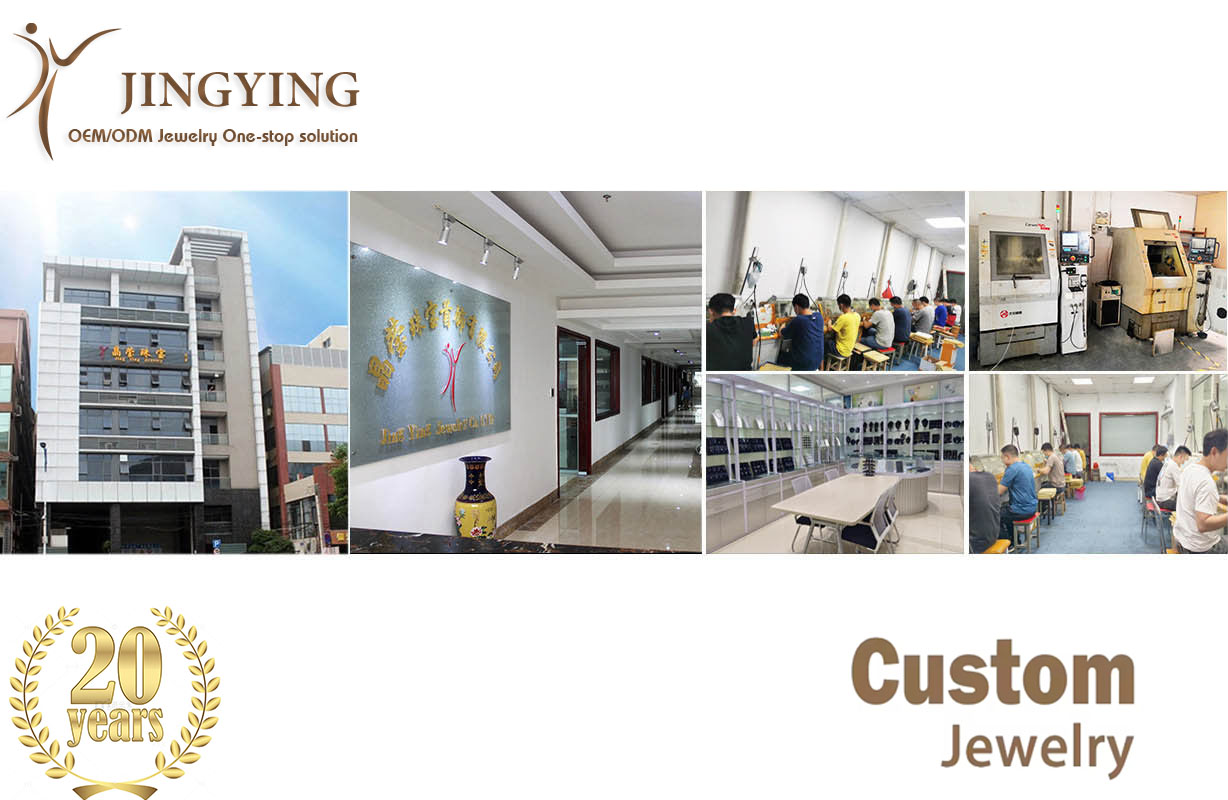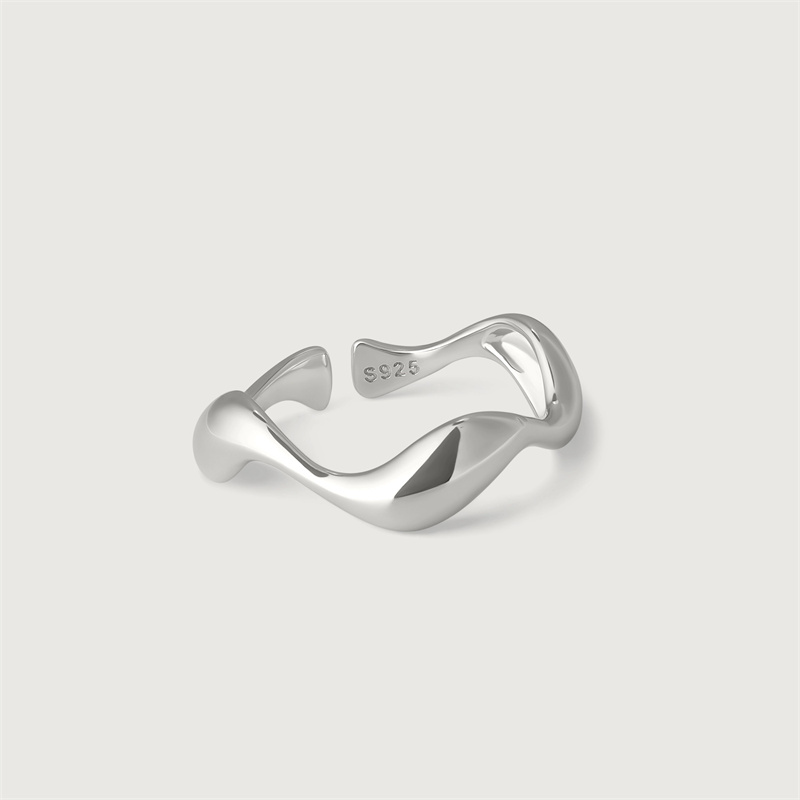The Complete Guide to Custom Solid 925 Sterling Silver Ring Process: From Concept to Creation
Introduction: The Art and Science of Custom Silver Ring Making
Custom solid 925 sterling silver ring creation represents a perfect marriage of traditional craftsmanship and modern technology. This comprehensive 5000-word guide explores the intricate process of creating bespoke sterling silver rings, from initial concept to final polishing. The custom jewelry market has seen remarkable growth, with the personalized ring segment experiencing a 23% annual increase, driven by consumers seeking unique, meaningful pieces that reflect their individual style and stories.
The process of creating a custom solid 925 silver ring involves multiple stages of precision work, quality control, and artistic expression. Understanding this process is crucial for both jewelry designers and customers looking to create their perfect ring. This guide will walk through every step, highlighting the technical specifications, time requirements, and expert considerations that transform raw materials into wearable art.
1. Initial Consultation and Design Development
1.1 Client Consultation Process
The foundation of any successful custom ring project begins with thorough client communication:
Information Gathering:
- Personal style preferences and aesthetic vision
- Ring purpose (engagement, wedding, fashion, commemorative)
- Wearer’s lifestyle and daily activities
- Budget considerations and timeline
- Special symbolic or personal elements to incorporate
Technical Measurements:
- Accurate finger size measurement (multiple methods)
- Preferred width and thickness of the band
- Comfort fit preferences
- Dominant hand considerations for size adjustment
Design Inspiration:
- Mood boards and visual references
- Existing jewelry pieces for style alignment
- Stone preferences and specifications
- Metal finish and texture desires
1.2 Design Creation and Visualization
Hand Sketching Phase:
- Initial concept sketches (3-5 variations)
- Proportion studies and scale considerations
- Technical drawings with measurements
- Client feedback and revision cycles
Digital Modeling:
- 2D vector drawings for precise dimensions
- 3D CAD modeling for complex designs
- Virtual renderings with realistic metal appearance
- Multiple angle views for comprehensive understanding
Design Approval Process:
- Client review of digital or physical prototypes
- Material and finish selection confirmation
- Final sign-off on all design elements
- Technical specification agreement
2. Technical Design and Engineering
2.1 CAD Modeling Process
Software Platforms:
- Industry-standard programs: Rhino 3D, Matrix, ZBrush
- Parametric modeling for precise dimensions
- Boolean operations for complex shapes
- Surface modeling for organic forms
Technical Considerations:
- Shrinkage Compensation: 8-10% scale increase for casting
- Wall Thickness: Minimum 1.2mm for structural integrity
- Comfort Optimization: Rounded interiors, smooth edges
- Stone Setting Preparation: Precise seat dimensions and prong placement
Quality Checks:
- Watertight mesh verification
- Minimum thickness validation
- Undercut identification
- Casting feasibility analysis
2.2 Prototyping and Sampling
3D Printing Options:
- SLA (Stereolithography): High resolution for detailed designs
- DLP (Digital Light Processing): Faster printing for multiple iterations
- Material Jetting: Ultra-high resolution for intricate patterns
- Wax Printing: Direct casting patterns
Prototype Review:
- Physical feel and weight assessment
- Proportion verification on actual finger
- Design element clarity evaluation
- Comfort and wearability testing
3. Material Selection and Preparation
3.1 Sterling Silver Specifications
Material Standards:
- Composition: 92.5% silver, 7.5% copper (meets international standards)
- Form: Casting grain, sheet, or wire stock
- Certification: Mill certificate or assay mark verification
- Origin: Recycled or newly mined silver options
Alloy Considerations:
- Traditional copper alloy for strength
- Alternative alloys for reduced fire scale
- Germanium-containing alloys for enhanced tarnish resistance
- Custom blends for specific working properties
3.2 Quality Verification
Material Testing:
- XRF analysis for composition verification
- Hardness testing for workability assessment
- Surface quality inspection
- Batch consistency checking
4. Manufacturing Process: Step by Step
4.1 Mold Making and Pattern Creation
Investment Casting Preparation:
- Pattern Creation: 3D printed wax or resin models
- Spruing: Strategic attachment to wax tree
- Investment Mixing: Special plaster-silica compound
- Vacuum Degassing: Bubble removal for smooth surfaces
Mold Curing Process:
- Controlled temperature ramp-up
- Wax burnout cycle (12-18 hours)
- Mold hardening at specific temperatures
- Final mold inspection
4.2 Casting Process
Melting and Pouring:
- Silver melting temperature: 893°C (1640°F)
- Vacuum or centrifugal casting methods
- Controlled cooling rates
- Flask breakdown and extraction
Casting Quality Control:
- Complete tree inspection
- Casting defect identification
- Weight verification against digital model
- Initial surface quality assessment
4.3 Post-Casting Processing
Tree Breakdown:
- Careful sprue removal
- Initial rough cleaning
- Weight recording for material usage
- First-stage inspection
Surface Preparation:
- Sandblasting for uniform texture
- Tumbling for initial smoothing
- Grinding and filing for perfect shapes
- Dimension verification
5. Stone Setting and Detailed Work
5.1 Setting Preparation
Stone Selection and Verification:
- Gemstone quality inspection
- Size and shape matching to settings
- Color and clarity grading
- Security and alignment checking
Setting Techniques:
- Prong Settings: 4-6 prongs, precisely formed and shaped
- Bezel Settings: Custom-fitted collars for secure holding
- Channel Settings: Precisely milled channels for multiple stones
- Pavé Settings: Multiple small stones set in intricate patterns
5.2 Precision Setting Process
Tool Selection:
- Micro-prong forming tools
- Precision bezel rockers
- Loupes and microscopes for detailed work
- Specialized gravers and burs
Quality Assurance in Setting:
- Stone security testing
- Prong symmetry verification
- Height and alignment checking
- Final polish preparation
6. Finishing and Polishing
6.1 Surface Finishing Techniques
Texture Applications:
- High Polish: Multi-stage polishing to mirror finish
- Satin Finish: Uniform brushed appearance
- Hammered Texture: Artisanal hammer marks
- Sandblasted: Matte, non-reflective surface
- Engraved: Custom patterns or inscriptions
Polishing Process:
- Progressive abrasive compounds (from coarse to fine)
- Multiple polishing wheel types and materials
- Hand polishing for intricate areas
- Final buffing for brilliant luster
6.2 Quality Inspection
Comprehensive Checking:
- Dimensional accuracy verification
- Surface finish consistency
- Stone security confirmation
- Hallmark and marking application
- Final weight and measurement recording
7. Hallmarking and Certification
7.1 Legal Requirements
Standard Hallmarks:
- 925 purity mark
- Maker’s mark or manufacturer identification
- Assay office mark (region dependent)
- Date letter (optional)
Additional Markings:
- Custom logos or signatures
- Special edition numbering
- Personal inscriptions
- Quality certifications
7.2 Documentation
Customer Package:
- Certificate of authenticity
- Care and maintenance instructions
- Quality guarantee documentation
- Appraisal or valuation documents
8. Quality Control and Assurance
8.1 Final Inspection Protocol
Visual Inspection:
- 10x magnification examination
- Surface defect identification
- Finish consistency verification
- Stone alignment and security
Technical Verification:
- Ring size accuracy confirmation
- Weight tolerance checking
- Dimension verification
- Functionality testing
8.2 Performance Testing
Durability Checks:
- Stone retention under stress
- Clasp function (if applicable)
- Surface wear resistance
- Structural integrity
9. Packaging and Presentation
9.1 Custom Packaging Design
Presentation Materials:
- Luxury ring boxes
- Custom inserts and cushions
- Branded packaging elements
- Care kit inclusion
Documentation Package:
- Certificate of authenticity
- Care instructions
- Warranty information
- Brand story and craftsmanship details
10. Timeline and Project Management
10.1 Standard Production Timeline
Process Breakdown:
- Design and Consultation: 3-7 days
- CAD Modeling and Prototyping: 5-10 days
- Casting and Manufacturing: 7-14 days
- Setting and Finishing: 5-10 days
- Quality Control and Hallmarking: 2-5 days
- Total Timeline: 22-46 business days
10.2 Rush Order Considerations
Expedited Options:
- Priority design scheduling
- Express manufacturing processes
- Additional quality control shifts
- Premium shipping methods
11. Cost Structure and Pricing
11.1 Cost Components
Direct Costs:
- Material costs (silver weight + 15% casting loss)
- Stone costs (if applicable)
- Labor hours at various skill levels
- Technology and equipment usage
Indirect Costs:
- Design and consultation time
- Overhead and facility costs
- Quality control and certification
- Packaging and presentation
11.2 Pricing Strategy
Value-Based Pricing:
- Complexity of design
- Skill level required
- Time investment
- Market positioning
- Brand value and reputation
12. Customer Service and Aftercare
12.1 Delivery and Presentation
Final Presentation:
- Unboxing experience design
- Personal delivery options
- Virtual presentation for remote clients
- Documentation review
12.2 After-Sales Service
Ongoing Support:
- Sizing adjustments
- Cleaning and maintenance services
- Repair and restoration
- Warranty claims processing
Conclusion: The Art of Custom Creation
The process of creating a custom solid 925 sterling silver ring represents a journey of collaboration, craftsmanship, and technical excellence. From the initial spark of an idea to the final polished piece, each stage requires careful attention to detail, skilled execution, and quality assurance.
The growing demand for custom jewelry—projected to reach $31.5 billion by 2026—demonstrates consumers’ desire for personalized, meaningful pieces that tell their unique stories. For jewelry creators, understanding and mastering this process opens opportunities to create heirloom-quality pieces that customers will treasure for lifetimes.
Whether creating a simple band or an elaborate statement piece, the principles of quality craftsmanship, clear communication, and attention to detail remain constant. The result is not just a piece of jewelry, but a wearable work of art that carries personal significance and represents the perfect fusion of client vision and artisan skill.
By following this comprehensive process, jewelry creators can ensure every custom sterling silver ring meets the highest standards of quality, beauty, and personal significance, creating pieces that will be cherished for generations to come.

